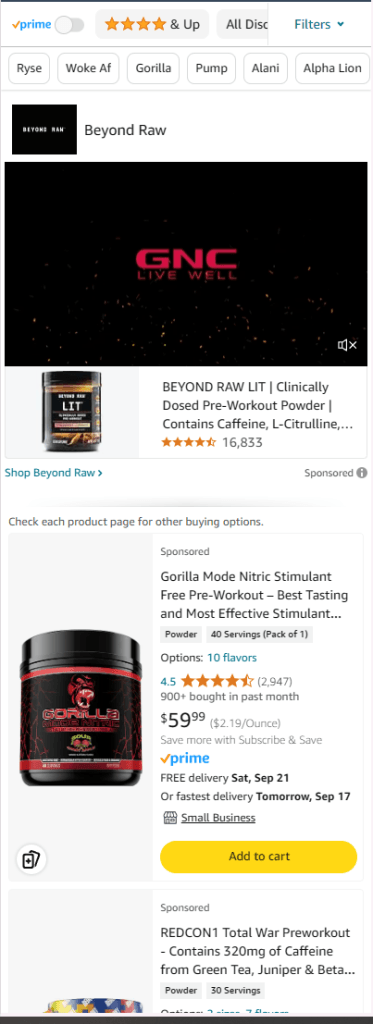Amazon is a publicly-traded company who has 1 singular goal: become as profitable as possible.
As An Amazon seller, you need to know this and remember this everytime a fee increases.
Every single FBA fee increase, CPC increase, additional fee added in, is because Amazon needs to keep becoming more profitable every year or they will lose investors.
This means that Amazon will perpetually want you to use Amazon’s AWD as a 3PL, Amazon’s FBA program as fulfillment, Amazon’s BWP program as your DTC fulfillment, Amazon’s DSP and Amazon Advertising as customer acquisition channels, and ultimately, Amazon.com Seller Central as a key channel in your business as they get a referral cut out of every single sale.
Amazon’s Search Engine Algorithm today is exactly a function of trying to make Amazon as much money as possible.
Amazon cares significantly about customer experience because part of their product-selling profitability is in Prime customers buying a ton of products while keeping their prime subscription live each year.
Amazon wants you to be in-stock. Running out of stock heavily hurts Amazon’s business model.
Let’s take a look at SERP in 2024 to analyze deeper.

Here is a mobile search result for “pre workout”, a term with millions of searches manually.
We start with a Sponsored Brand Video ad ad the top. $ in Amazon’s pocket for each client.
Then, it goes Sponsored Product placements for the next two. More money for Amazon.

We finally now move past paid placements to the next 3 organic placements.
The Top-seller gets a “best seller” badget which helps conversion rate and click-through rate during searches for the terms.
Amazon is promoting subscribe and save (which makes them money with auto-ordering products) and coupons on search to help reduce customer objections to checkouts. Mind you, Amazon does give buyers and extra percentage off for subscriptions, so this is a loss lead for them.
All of these include Prime FBA shipping, which makes them money.
Amazon cares about advertising money as its margins are massive in that category. We expect all of the first search results on mobile and desktop to be sponsored for the rest of time. Sellers pay premium dollar (typically 50% more than other placements) for this prime real estate. It’s like paying for an end-cap in retail, the visibility skyrockets.
Next, Amazon knows that review count and review quality matters. If the average product in the search result has a 4.3/5 review quality and over 1000 reviews, you’re almost always going to see organic 1-3 placements with products above that baseline average.
Amazon wants sellers to either be at the average price, under the average price, or far over the average price. For this search results, $22 was the average price. Notice the top 3 organic slots were within $4 of that price point.
If you drive branded search to Amazon, it helps you on unbranded searches. Both ON and C4 have massive branded search on Amazon. They’ve done well enough on organic social, paid social, influencer, retail, and more to grow a brand that people search, trust, and recognize. This helps them get sales on their SKUs which helps show Amazon that customers love these products which helps drive conversion rate on unbranded terms like “pre workout”.
The keyword in on the packaging. You can find “pre-workout” or a variation on the product packaging on this one. Just like in retail, you need to stand out. Having the exact product description in large font helps Amazon’s image AI to identify what the product is quickly.
You need:
Pay for advertising visibility on Amazon and off-Amazon
An engaging offer (price point, flavor, size, etc.)
Reviews that are above a 4.3/5 and at higher quantities than your competitors
Packaging that’s engaging nad has the most relevant keyword on it in a readable font size.
To go over the top:
Branded search demand



